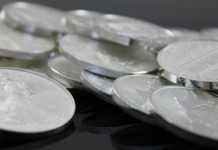In a recent development that has cropped up, China’s biggest banks happen to be lowering the deposit rates that are offered to savers, a scenario that could pave the way for the central bank to go ahead with interest rate cuts so as to boost economic growth.
Five state-owned lenders as well as joint-stock bank China Merchants Bank remarked that the rate cuts took effect recently. The five happened to be China Construction Bank, Industrial and Commercial Bank of China, Agricultural Bank of China, Bank of Communications, and Bank of China.
It is well to be noted that the interest rates on time deposits with a tenure of three months, six months, as well as one year were slashed by 0.1 percentage points, whereas the rate on two-year deposits was decreased by 0.2 percentage points, as per the statements and information that have been posted by the banks. Rates on three- as well as five-year deposits got decreased by 0.25 percentage points each.
One of the economists at Nomura, Lu Ting, said that the lower deposit rates should enable banks to cut the pressure on their’ net interest margins and also lay the groundwork for the PBOC so as to decrease its policy lending rates in January, which, by the way, have been left unchanged for the last four months.
Interestingly, industry-wide, banks’ net interest margin, with the difference between the rates lenders offer for deposits and what they go on to charge on loans, happened to slip to a record low of 1.73% as of September, as per the official data.
Apparently, Beijing slashed the lending rates numerous times during and even after the pandemic so as to stimulate economic growth, which has gone on to squeeze the profitability of the commercial banks of the country. The profit squeeze goes on to limit the room banks in order to have to lower loan rates further.
China’s standard lending rates looked balanced this month, as per the central bank.
After this move, Lu anticipates China’s central bank to decrease the policy lending rates in January next year, which would then go on to lead to landmark price cuts.






















